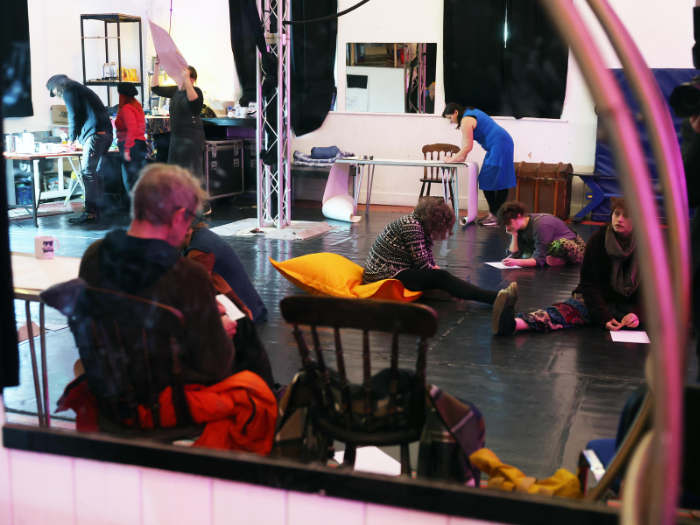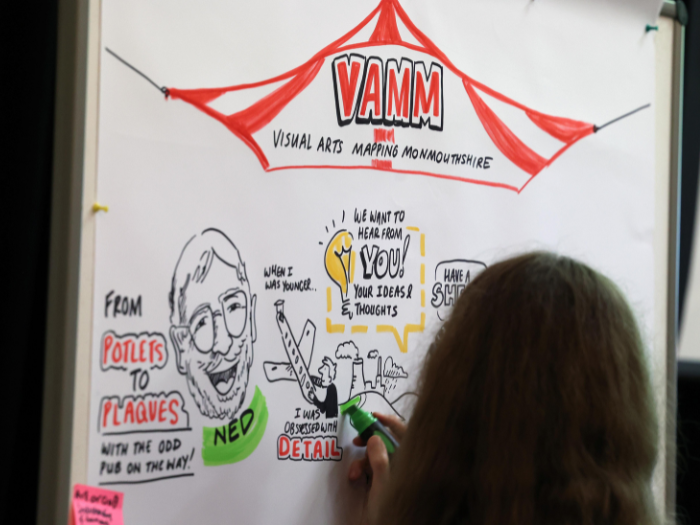
A pilot project to nurture creative talent in three local authority areas resulted in 15 new jobs and up to £230,000 in additional revenue.
Cardiff University’s Centre for the Creative Economy worked in partnership with Newport, Monmouthshire and Rhondda Cynon Taf (RCT) local authorities to develop Creative Industries Cluster Hubs (CICH), funded by the Arts and Humanities Research Council (AHRC) and Department for Culture, Media and Sport (DCMS).
During the project (July 2023 – March 2024), more than 1,000 artists and creative business owners were brought together, 41 public events and engagement activities were delivered and 691 creative business and practitioners were mapped to understand the sector’s reach within these communities.
Analysis of the project’s impact over the past year shows it has generated:
- Additional revenue of £200,000-£230,000;
- Up to 15 jobs;
- An increase in the survival rate of businesses;
- Positive changes in the working conditions of freelancers;
- An increase in the engagement of creatives with protected characteristics.
The project has expanded on the success of Creative Cardiff (established 2015) and Clwstwr (2018 – 2022) to create a similar model for areas outside the Welsh capital.
RCT-based multidisciplinary artist Bridie Doyle-Roberts explored her ‘art rave’ idea thanks to funding from the project.
She said:
An art rave is essentially an immersive experience that combines the concepts of a gallery, a theatre performance and a night out. The audience members wander around while lots of people make art, sometimes getting involved and at other times simply observing.
Being a creative or an artist can be quite lonely and repetitive. I wanted to encourage artists who work on their own or in one specific way to explore whether there are new ways they can work, new platforms for their work or new collaborations they could try.
She added: “It’s been good to see so many events and activities going on locally. Yes, the county is spread out and there are issues with things like transport and access, but it would be so good if we were able to put on more interesting things, different things that will draw people out from Cardiff as well as gathering local people together.”

Ned Heywood, a ceramicist based in Chepstow, has been part of the Monmouthshire arts scene for over 40 years. He works in his gallery and workshop, a converted pub from the 1700s, with his work partner Julia Land, where they predominantly make blue plaques. He gave a talk about his lifetime of work as part of the Visual Arts Mapping Monmouthshire group’s Creative Drinks series
He said: “My talk, ‘From potlets to plaques with the odd pub on the way’, went very well, and lots of people came along. It was lavishly illustrated with about 70 photographs that traced my work through the years, from teacher to monopoly supplier in a niche market.”
Being amongst many other creatives from the area was enlightening for Ned:
It reinforced the feeling that visual arts need support. Everyone knows that cash is pretty tight to say the least, at the moment, so funding for such support just isn’t there. It’s very difficult. People need to get together, cooperate and collaborate.
Report author and Head of Creative Cardiff Jess Mahoney said:
At Creative Cardiff, we love Cardiff’s thriving creative workforce and take great pride in seeing all that the sector has achieved: bringing communities together to share experiences, driving jobs and growth, realising bold new innovations, and growing in reputation as a globally recognised hub for media and screen. But we also recognise that creativity does not start and end in our cities.
As Cardiff’s creative cluster grows in scale and renown, it will be become increasingly important that we harness the wealth of emerging talent across our wider region to take advantage of new opportunities, convene new communities and build thriving, representative new creative places. Creative Industries Cluster Hubs is a first step in achieving this.
Newport-based freelance artist and creative Heidi Mehta said: “I definitely think there’s a need for what CICH Newport is providing. While I’m quite well-networked in the community arts sector, I'm less so with my personal studio practice. It can feel isolating in my studio on my own, so the chance to find a few more artists that work in that area is brilliant, and so important for our wellbeing.”
The analysis report recommends further investment to expand on these successes, as well as more comprehensive data mapping to understand where creative businesses are basing themselves and why.
Jess Mahoney added:
From the results of the pilot, it’s clear that the framework offers an opportunity to better support, engage and enable the cultural and creative workforce across the entirety of the Cardiff Capital Region. We sincerely hope we can connect with funders, supporters and stakeholders to jointly find a way to continue this work, build on the success of Cardiff’s creative cluster and go further, together.


